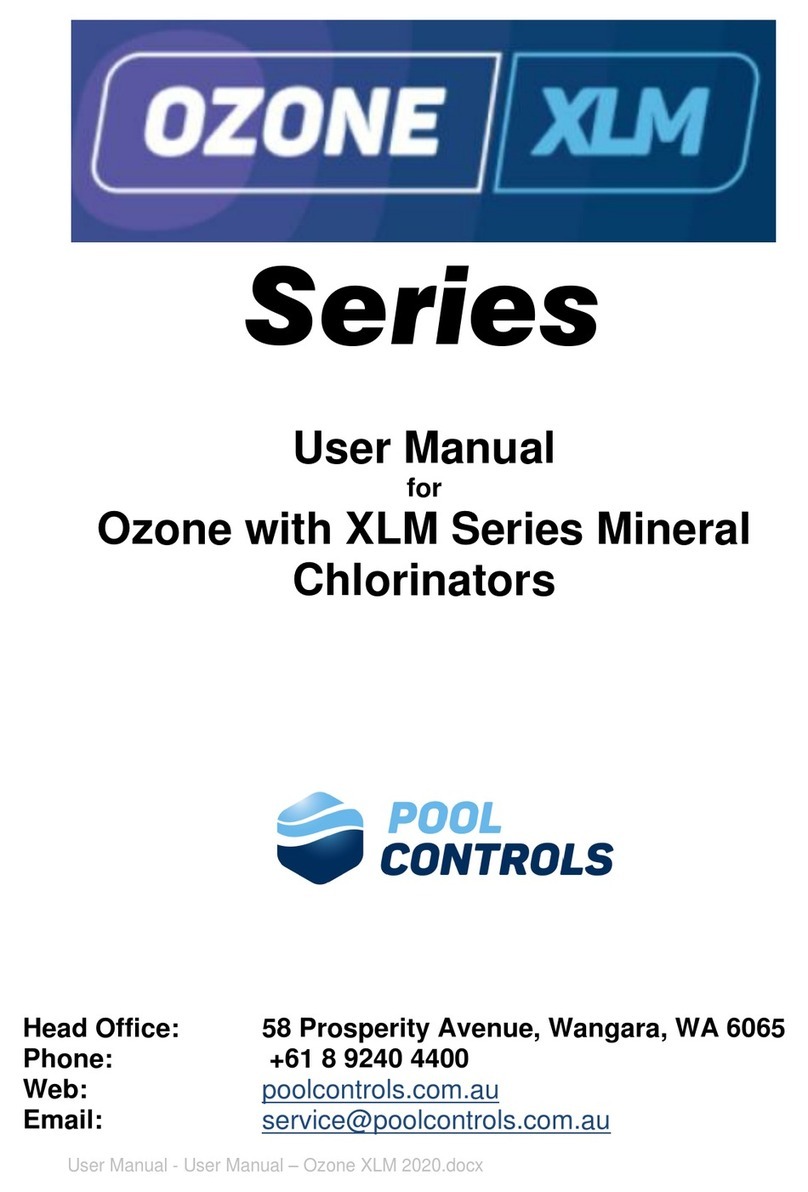•If required, arrange for the relevant Pool Controls’ product to be returned to Pool
Controls for repair, and the warranty holder is responsible for the cost and risk of
any freight or transportation to and from Pool Controls.
CALL OUT FEES
•This is a “Back to Base” Warranty, which means that if the Pool Controls product
needs to be serviced, replaced or repaired at a place other than Pool Controls’
premises, a call out fee will be charged to cover the cost of travel by an authorised
Pool Controls technician. Please note that this call out fee will NOT be charged
when the relevant Pool Controls product is returned to Pool Controls for repair.
•If an authorised Pool Controls technician repairs or replaces a Pool Controls
Product and this warranty does NOT apply, a fee for labour and parts supplied will
be charged in addition to the call out fee.
•If the Pool Controls product needs to be returned for repairs under this warranty,
the warranty holder is responsible for the cost and risk of any freight or
transportation to and from Pool Controls.
WARRANTY EXCLUSIONS
•This warranty is for domestic installations only. Where Pool Controls products are
installed for a commercial application this warranty does not apply.
•This warranty extends to the original owner only, beginning on the date of
installation and is not enforceable by any other party without the prior written
consent of Pool Controls.
•Pool Controls is not responsible for any cost of freight or transportation to or from
its Service Department.
•Pool Controls is not liable under this warranty if the installation of the Pool
Controls product was not carried out by a suitably qualified technician.
•To the extent permitted by law, Pool Controls is not liable for:
➢any incidental or consequential loss incurred in connection with the removal or
replacement of the Pool Controls product under this warranty; or
➢product failure resulting from misuse, freezing, accident, negligence, improper
installation or inadequate maintenance.
•To the extent permitted by law, Pool Controls disclaims all other warranties, either
express or implied, including, but not limited to, implied warranties of
merchantability and fitness for a particular purpose with regard to Pool Controls
products, parts and/or any accompanying written materials.
REGISTER YOUR WARRANTY NOW
Go to www.poolcontrols.com.au, click on the warranty registration tab to fill in your details.
CONTACT POOL CONTROLS
Pool Controls is based at 58 Prosperity Avenue, Wangara, Western Australia. We also
have service technicians based in NSW, Queensland and Victoria.
•Service Phone: +61 8 9240 4400




























